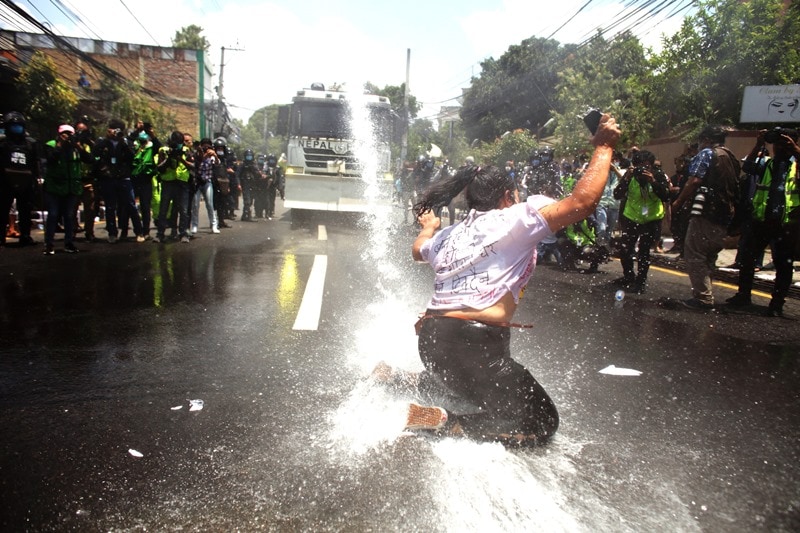Nepal Police says, “water cannons will be used to disperse crowds after questions were raised about use of tear gas.”
Praju Panta: Centre for Investigative Journalism-Nepal
On June 11, Nepal Police stopped protesters at Bhatbhateni while they were heading towards the prime minister’s residence in Baluwatar. After the scuffle protesters were chased down and tear gas was fired when they reached Gairidhara.
Protesters united under the banner of ‘Enough is Enough’ had spontaneously taken to the street to protest the government’s failure in taking effective measures to handle the coronavirus crisis, risky quarantine health facilities and not prioritizing PCR testing. Police fired 11 rounds of teargas shells to disperse the crowd.
Police Spokesperson Niraj Bahadur Shahi said they have now started to use water cannons for crowd control instead of using tear gas. Asked why they used tear gas shells in the recent Baluwatar protest Shahi said, “Police was forced to use tear gas shells only after the situation turned out of control”.
He claimed minimum force was used to control the crowd.

People gathered in peaceful protest outside the prime minister’s residence in Baluwatar on June 9, 2020 were met with water canons. Photo: Bikram Rai
On May 25, Centre for Investigative Journalism Nepal (CIJ-N) had published a report entitled “A crying shame: The Nepal Police has been using expired tear gas shells and is likely to continuing doing so” highlighting health hazards of expired teargas shells. Tear gas was used to control the crowd.
Recently, police in the US fired tear gas at crowds protesting the killing of George Floyd, a black man. To protest use of tear gas Robert Reich, an economist and the secretary of Labor Under President Bill Clinton said that “Your reminder that tear gas is a chemical weapon banned in war.”
The USA TODAY published a story based on his statement . Following his statement several social media users commented that use of teargas was a sheer negligence to human health that too when the world is suffering from COVID-19 pandemic. Later, the newspaper had fact checked about Clinton’s statement as well.
The news article mentioned tear gas not only irritates cells, but also activates pain receptors, which leads to intense burning pain in the eyes, throat, lungs, skin and mucous membranes.
Also, the news article criticized the US government for using teargas to suppress protests initiated for civil liberties.
As stated in the newspaper Dr. Robert Glatter, an emergency physician in New York City, said “tear gas isn’t necessarily a “gas” but rather a powder that is heated and mixed with a solvent and released as an aerosol.”

Glater has claimed that tear gas can also exacerbate muscle-cramping in the eye and sensitivity to light that leads to eye closure.
Quoting Dr. Kelly Johnson-Arbor, medical director at National Capital Poison Center, USA TODAY has stated ‘picking up tear gas canisters can cause burn injuries because canisters can detonate, which exposes people to propellants, solvents and explosives.’
As described by the US’s National Center for Biochemistry Information of National
Library of Medicine, CS gas is an aerosol and spreads shortly after dispersing in the
air. Generally, this is considered a lethal weapon.
The CN gas is considered more lethal than CS. Considering its toxic impacts many countries started to replace CN gas with CS gas in 1959.
Nepal Police is considering replacing tear gas after CIJ-N published an article about negative impacts of tear gas. “After reading that article I discussed with the concerned agency. A study will be carried out soon and we will come up with a conclusion about use of tear gas accordingly,” said Police Spokesperson Shahi.



